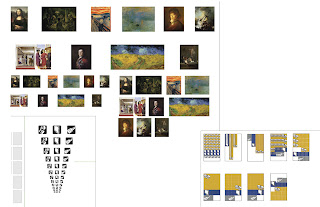





artAppearances: The Art Of Class (Paperback)
~ G. Keith Evans (Author)
Editorial Reviews
Product Description
Class- that familiar measure of sophistication- exists not as a gauge of wealth and achievement but as a byproduct of subtle refinement. Minute details, commonly overlooked by even the most well-heeled, can distinctly set an individual apart from the faceless persona of the middle-class. Appearances addresses these subtle nuances, analyzing finespun details ranging from the common consideration of etiquette to the societal impact of world travel.
The Art of the Steal: How to Protect Yourself and Your Business from Fraud, America's #1 Crime (Paperback)
Editorial Reviews
Amazon.com Review
Author Frank W. Abagnale knows something about fraud--he once committed it for a living. "Through my various hustles, I passed something like $2.5 million worth of checks, a blizzard of paper that I scattered in earnest throughout all fifty states and twenty-six countries, all before I was legally allowed to drink," he writes. "I was proficient enough at cashing fraudulent checks that I earned the distinction of becoming one of the most hunted criminals by the FBI." Abagnale was ultimately caught, and he served prison sentences in France, Sweden, and the United States. In the 25 years since his release, Abagnale (who also wrote Catch Me If You Can) has become a leading consultant on fraud prevention.
"I'm still a con artist. I'm just putting down a positive con these days, as opposed to the negative con I used in the past," he explains. "I've applied the same relentless attention to working on stopping fraud that I once applied to perpetrating fraud." His expertise comes in handy: businesses lose an estimated $400 billion each year to fraud. The stories Abagnale tells in The Art of the Steal provide fascinating glimpses of a criminal underworld. He describes "shoulder surfers" who rip off bank customers at ATMs by videotaping their fingers as they enter PIN numbers, retrieving receipts from wastebaskets, and then creating fake credit cards--all rather inexpensively. Whole sections of the book almost read like a how-to manual for aspiring thieves, though Abagnale has other motives. Throughout, he offers sensible advice on how to foil the con artists. Much of this is common sense (cut up credit cards when they expire), but some of his suggestions aren't so obvious. He warns readers not to write checks to the "IRS," for instance: "Envelopes to the IRS are common targets because of where they're going." Instead, checks should be made out to the "Internal Revenue Service," because criminals can turn the "I" of "IRS" into an "M," and turn a tax payment into a gift for "MRS." Smith. The chapter on the emerging problem of identity theft--with its tips on how to keep Social Security numbers private--is especially helpful. In all, The Art of the Steal is captivating and useful. --John Miller --This text refers to an out of print or unavailable edition of this title.
The Gun Digest Book Of Concealed Carry (Paperback)
Editorial Reviews
Product Description
In addition to tactical aspects of self-defense, practical information like choosing the right firearm and ammunition, used gun purchases, and all legal aspects of self-defense with a gun are also extensively covered in this complete and authoritative look at concealed carry.
About the Author
Massad Ayoob is one of the pre-eminent fighting handgun trainers in the world. He operates the Lethal Force Institute, which trains both U.S. and international clients. His methods of reflexive, high speed yet accurate shooting has been adopted by the U.S. army as part of its standard pistol-training course. Massad has written many books for Krause Publications, including Combat Handgunnery, The Gun Digest Book of Sig-Sauer, and The Gun Digest Book of Beretta Pistols.



